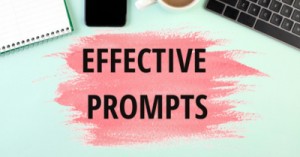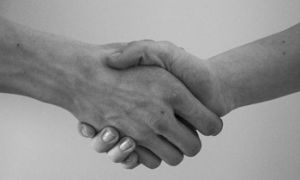A: While photos can enrich documentation by capturing moments visually, many observations are just as powerful when conveyed through thoughtful narrative, voice transcripts, symbolic sketches, or emotionally intelligent reflection.
Why Photo-Free Observations Matter
Photos can be powerful, but they’re not always appropriate, available, or emotionally safe. In trauma-informed, culturally inclusive, or privacy-sensitive contexts, alternative formats often offer richer insight and deeper connection. They:
- Center the child’s voice and emotional tone.
- Honour symbolic expression and neurodiverse communication.
- Reduce surveillance and performance pressure.
- Encourage educator reflection and contextual depth.
- Protect privacy and cultural sensitivities.
Valid Photo-Free Observation Formats
| Format | Description | Example |
|---|---|---|
| Anecdotal Records | Descriptive, narrative accounts of a child’s actions, words, or interactions. | “Luca stacked five blocks, then whispered, ‘I made a tower for the moon.’” |
| Voice Bubble Transcripts | Captures direct quotes or imagined dialogue to reflect emotional tone. | “I’m not scared. I’m just thinking with my eyebrows.” — Ava, age 4 |
| Symbolic Sketches or Child Drawings | Used as visual anchors to represent emotion, story, or developmental themes. | A child draws a rainbow with a missing color, saying “This one is for my grandma.” |
| Reflective Journaling | Educator insights, emotional cues, or developmental reflections. | “Today, Kai lingered at the sensory table. His movements were slow and deliberate—a shift from yesterday’s urgency.” |
| Checklists or Milestone Trackers | Structured formats that highlight progress, patterns, or emerging skills. | “✔ Initiates peer play 3x this week. ✔ Uses 3-word phrases during transitions.” |
| Modular Templates | Tools like voice bubble cards, emotion wheels, or symbolic planners. | “Child selected the ‘stormy cloud’ card after conflict. Later chose ‘sun peeking out’ during resolution.” |
| Sensory or Emotional Mapping | Tracks emotional states, sensory preferences, or regulation strategies. | “Chose ‘soft fabric’ and ‘quiet corner’ after loud group time. Regulated within 10 minutes.” |
| Symbolic Storytelling | Uses metaphor, character play, or imaginative scripts to reflect inner worlds. | “In the puppet show, the fox said, ‘I hide when people shout.’ The educator noted a parallel with recent transitions.” |
Photos can complement these formats, but they’re not essential. In fact, your emotionally intelligent tools, especially those that center pride, symbolism, and authentic voice, often thrive without them.
When Photos May Be Inappropriate or Unnecessary
- Cultural or religious sensitivities around image use
- Neurodiverse children who prefer symbolic or sensory expression
- Privacy concerns or family preferences
- Trauma-informed contexts where visual capture may feel invasive
- Moments of emotional regulation or quiet reflection
- Symbolic play or metaphorical storytelling that’s better captured in words
There’s a quiet joy in simply observing children without the lens of a camera. When we’re not focused on capturing the perfect shot, we become more attuned to the subtle expressions, whispered stories, and spontaneous moments that define early learning. The way a child furrows their brow in concentration, the rhythm of their play, or the sparkle in their eyes when they discover something new—these are powerful, fleeting experiences best held in memory, reflection, and narrative. Observing without a photo invites us to be present, responsive, and emotionally connected, honouring the child’s journey with our full attention.
Further Reading
Observations in Childcare
Photo Observations In Childcare
Q: What Is A Narrative Observation
Q: Do All Observations and Learning Stories Require a Follow-Up?
Q: How Do I Come Up With Extension Ideas During Observations
Q: How Do I Write A Group Observation?







 Here is the list of the EYLF Learning Outcomes that you can use as a guide or reference for your documentation and planning. The EYLF
Here is the list of the EYLF Learning Outcomes that you can use as a guide or reference for your documentation and planning. The EYLF The EYLF is a guide which consists of Principles, Practices and 5 main Learning Outcomes along with each of their sub outcomes, based on identity,
The EYLF is a guide which consists of Principles, Practices and 5 main Learning Outcomes along with each of their sub outcomes, based on identity, This is a guide on How to Write a Learning Story. It provides information on What Is A Learning Story, Writing A Learning Story, Sample
This is a guide on How to Write a Learning Story. It provides information on What Is A Learning Story, Writing A Learning Story, Sample One of the most important types of documentation methods that educators needs to be familiar with are “observations”. Observations are crucial for all early childhood
One of the most important types of documentation methods that educators needs to be familiar with are “observations”. Observations are crucial for all early childhood To support children achieve learning outcomes from the EYLF Framework, the following list gives educators examples of how to promote children's learning in each individual
To support children achieve learning outcomes from the EYLF Framework, the following list gives educators examples of how to promote children's learning in each individual Reflective practice is learning from everyday situations and issues and concerns that arise which form part of our daily routine while working in an early
Reflective practice is learning from everyday situations and issues and concerns that arise which form part of our daily routine while working in an early Within Australia, Programming and Planning is reflected and supported by the Early Years Learning Framework. Educators within early childhood settings, use the EYLF to guide
Within Australia, Programming and Planning is reflected and supported by the Early Years Learning Framework. Educators within early childhood settings, use the EYLF to guide When observing children, it's important that we use a range of different observation methods from running records, learning stories to photographs and work samples. Using
When observing children, it's important that we use a range of different observation methods from running records, learning stories to photographs and work samples. Using This is a guide for educators on what to observe under each sub learning outcome from the EYLF Framework, when a child is engaged in
This is a guide for educators on what to observe under each sub learning outcome from the EYLF Framework, when a child is engaged in The Early Years Learning Framework describes the curriculum as “all the interactions, experiences, activities, routines and events, planned and unplanned, that occur in an environment
The Early Years Learning Framework describes the curriculum as “all the interactions, experiences, activities, routines and events, planned and unplanned, that occur in an environment


